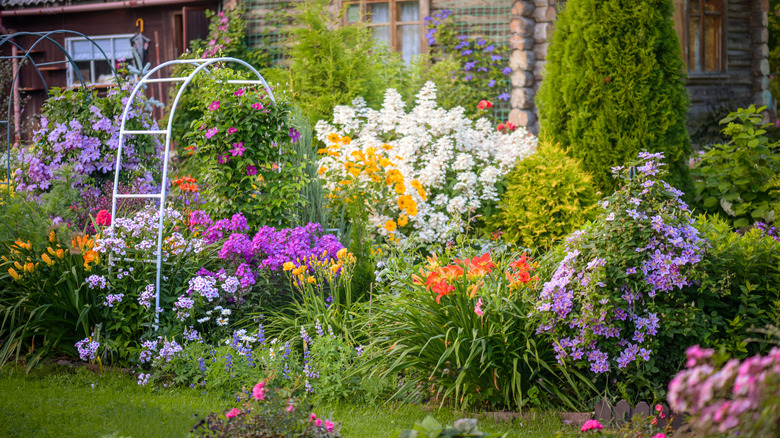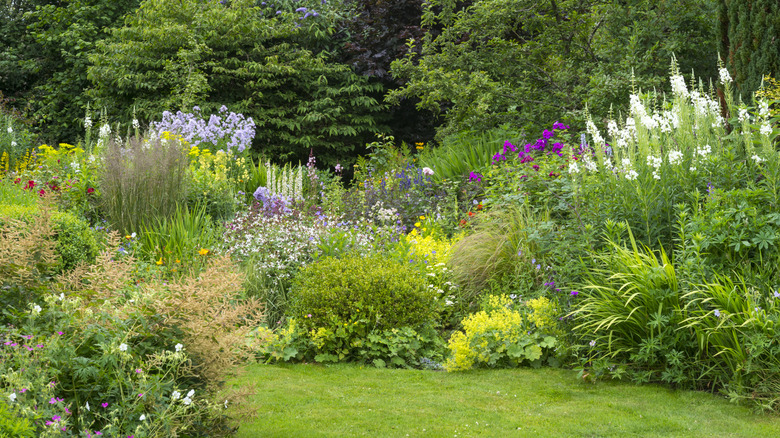Perennials Vs Annuals: The Real Difference And How To Choose For Your Garden
If you've been thinking about putting together a garden, you may have come across the terms annual and perennial. Annuals are generally defined as plants that complete their life cycle in a season. They grow flowers and set seeds during the growing season, and they die as the temperatures drop and winter sets in. While an annual plant won't come back the following year, some varieties do set seeds, which allows new plants to grow during the next season. Plants that live for three or more years are classified as perennials. At the end of the growing season, they often become dormant during the winter before coming back to life in the spring. But the reality can be a bit more complex. Some plants are treated as annuals in some regions and grow as perennials in other areas due to the differences in the climate and growing conditions.
Annuals and perennials aren't the only types of plants you may be growing in your garden, though. Biennials, like foxgloves, are also popular garden flowers, and they complete their life cycle in two years. Bulbs are also popular parts of gardens, and whether a specific species grows as perennials or annuals may depend on your region. In many cases, you can bring your bulbs inside for the winter and replant them each spring if they otherwise would not survive winters in your zone. While this can all become complex quickly, what's most important is knowing what a plant's life cycle is in your area and how you can use that information to create the best garden possible.
Using perennials and annuals in your garden
While you can certainly make a beautiful garden of just annuals, and this is quite common for vegetable gardens, you may want to use a mix of annual and perennial plants for many of your landscaped areas. This not only saves you the work of replanting your entire garden each year, but using woody perennials can help provide the garden with structure and winter interest. Opting for either evergreens or perennials, like hydrangeas, which keep their dried flowers on through winter, can help bring beauty to your garden even after your annuals are done for the year. Herbaceous perennials are also excellent additions to gardens, but because they die back each winter before reemerging again each spring, they can leave the ground looking a bit bare for part of the year. They do save you the work of replanting yearly, though.
While not always the case, many perennials take years to mature and can be slow growing. Many also do not bloom all season long. This is where annuals can come in. With their fast maturity and long bloom times, annuals can pack a big punch in a short amount of time. They also create a colorful living mulch to help prevent weeds from taking over your garden while you wait for perennials to mature and fill in. If you love growing annuals but don't want to deal with replanting each season, consider growing self-seeding flowers to fill your garden with color effortlessly.

